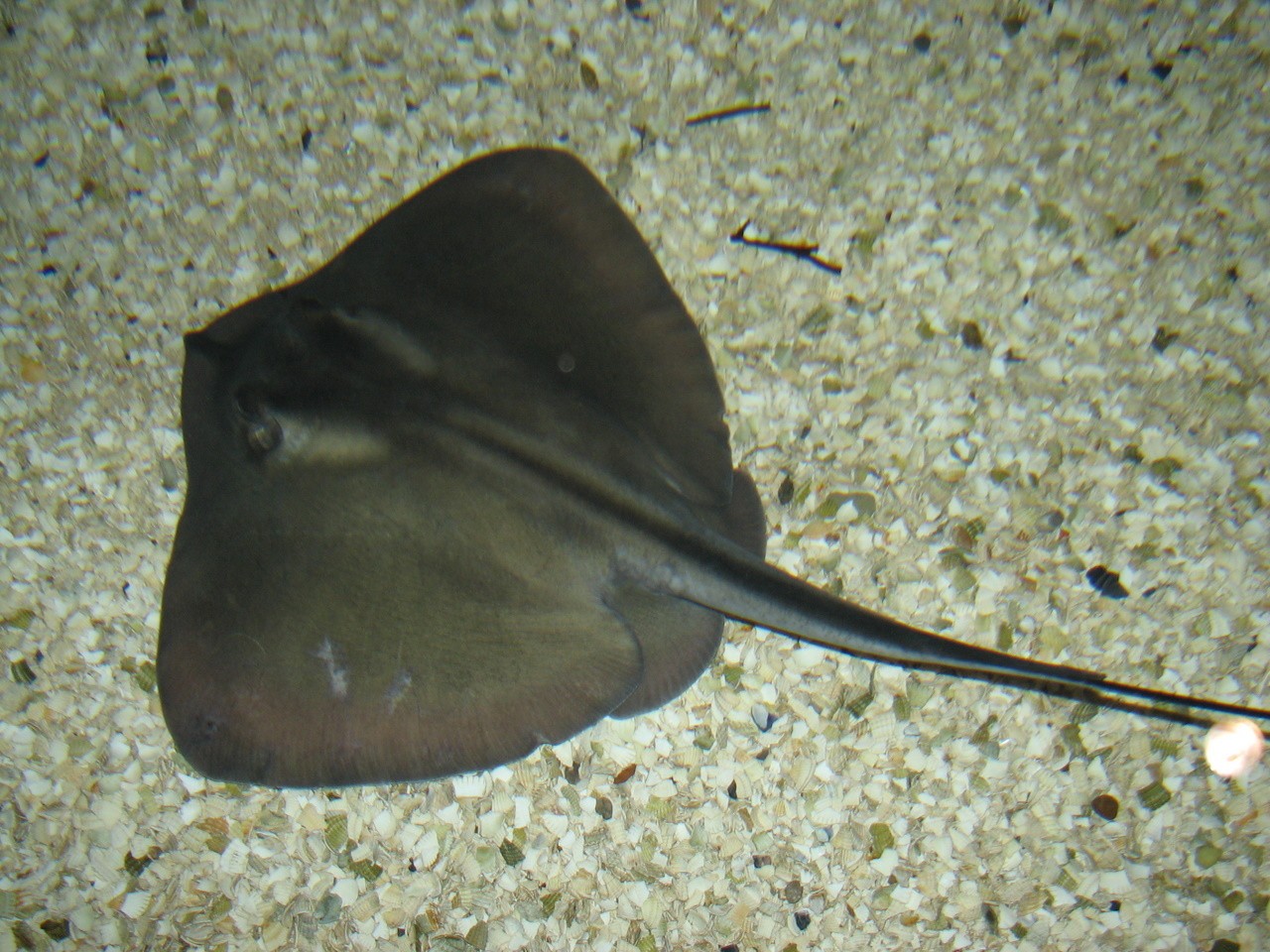Sting ray
A species of Stingray Scientific name : Dasyatis pastinaca Genus : Stingray
Sting ray, A species of Stingray
Botanical name: Dasyatis pastinaca
Genus: Stingray
Content
Description
 Photo By YaCBot , used under CC-BY-3.0 /Cropped and compressed from original
Photo By YaCBot , used under CC-BY-3.0 /Cropped and compressed from original Description
The common stingray has been reported to reach a width of 1.4 m (4.6 ft) and a length of 2.5 m (8.2 ft), though a width of 45 cm (18 in) is more typical. The flattened pectoral fin disc is diamond-shaped and slightly wider than it is long, with narrowly rounded outer corners. The leading margins of the disc are almost straight and converge on a pointed, slightly protruding snout; the trailing margins of the disc are convex. The eyes are smaller than the spiracles (paired respiratory openings), which are placed closely behind. There are 28–38 upper tooth rows and 28–43 lower tooth rows; the teeth are small and blunt, and arranged into flattened surfaces. There are five papillae (nipple-like structures) across the floor of the mouth. The tail is slender and whip-like, measuring approximately half as long as the disc. A stinging spine with strong serrations, measuring up to 35 cm (14 in) long and equipped with a venom gland at its base, is positioned about a third of the distance along the tail. A second or even third spine may also be present, as the spines are regularly replaced and new spines grow in before existing ones have been shed. The tail behind the spine bears a low cutaneous fold on top and a short, deep fold underneath. The body and tail are smooth, save for a few dermal denticles on the leading edge of the disk; older individuals may also develop a row of bony knobs along the midline of the back. This species is a solid gray, brown, reddish, or olive-green above, and whitish below with dark fin margins. Young rays may have white spots. The largest recorded common stingray specimen was found in 2016 in the Izmir province of Turkey in the course of a study on trolling. Its fins had a width of 2.21 metres (7.3 ft), although its length could not be determined as the tail had been removed earlier.
* Disclaimer: The judgment on toxicity and danger is for reference only. We DO NOT GUARANTEE any accuracy of such judgment. Therefore, you SHALL NOT rely on such judgment. It is IMPORTANT TO SEEK PROFESSIONAL ADVICE in advance when necessary.
Scientific Classification
Phylum
Chordates Class
Sharks and rays Order
Stingrays and relatives Family
Whiptail stingrays Genus
Stingray Species
Sting ray